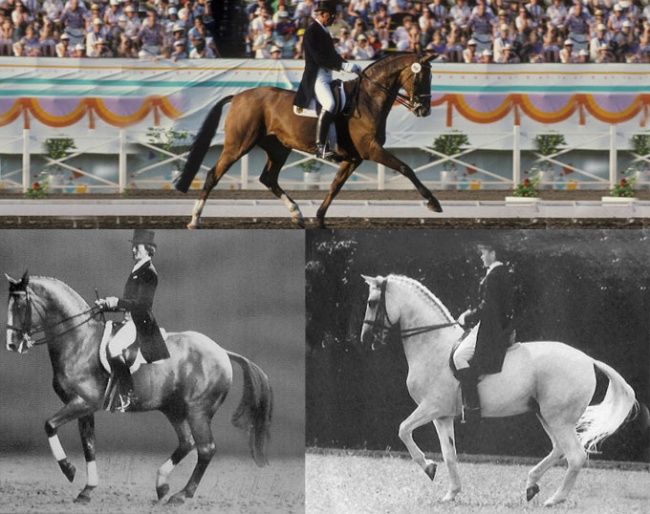
Guest columnist this week is Richard Malmgren. He was born and raised on a horse farm in southern Sweden in the mid 70s. He trained for five years with Lars Anderson, head trainer at Flyinge State stud, before moving to the U.S.A. to work at Hilltop Farm in 1996. He first worked there as a trainee while graduating from Delaware University with a Bachelor in Business Administration. Hilltop Farm then appointed him head of Sales and Marketing. In the autumn of 2007 Richard joined Hassler Dressage in Chesapeake City. In 2011 he married U.S. Grand Prix rider Jessica Jo Tate. Richard trains young horses through the levels and has a passion for equestrian photography.
I Question the Changing Ideals of Dressage Through the Years
With the Corona virus pandemic, most of us are staying at home and even though the chores in the stable have remained the same, we've all had extra time not traveling to teach clinics or attending shows. So during this time, I took the opportunity to watch some older dressage DVDs, and it got me contemplating on the state of our current dressage sport.
Watching these former champions of yesteryears got me thinking about what I saw at the World Equestrian Games in Tryon in 2018, as well as at this year's Olympic qualifiers at the 2020 Global Dressage Festival. It has filled my mind with so many questions and I think it’s time to look at where we want our sport to be going to. Maybe the corona virus gives us that time to reflect and come to a re-start or a new way of moving forward.
When you look back at the 1960 Olympics in Rome, the 1964 Olympic in Tokyo, or any of the Olympics since then, we are still doing the same required movements that they did back then, yet our horses have changed so much. The perfect horse hasn’t been born and never will be, and that is why all the books are written from the standpoint of an ideal training methodology. But what is the ideal? What was the perfect 10 in 1964 Tokyo Olympics and will that be the ideal in Tokyo 2020? Has it changed? Just because the horses have changed, should the ideal requirements change?
Do we train differently now that we did back then? What would our past generation's masters, such as Reiner Klimke, Herbert Rebhein, George Theodorescu and many more, or the second generation masters like Bubi Günther, Josef Neckermann, Henri S.t Cyr be able to do with the quality of horses we have available to us today? And what would they say about our style of riding now? It is a question that we will never get an answer to, but it makes me think! They rode the same level of difficulty that we are doing today with far less talented horses, yet show truer collection, correcter piaffes and the poll as highest point.
Nowadays do we see horses in the arena with the poll as highest point? Are the nostrils in-front of the eyes, or is the horse behind the vertical? Is the piaffe on the spot for 12-15 steps, or is it traveling forward with lift of the knees and hocks more important now and scored more highly today? Is the walk not that important today? What about the overtrack in the extended trot? Is that no longer of any relevance, as long as the front leg is almost parallel to the ground and the hind leg is left behind? Is the “old” Idea of the correct parallelogram no longer practiced?
I think we can all agree that the audience at most high level dressage shows are pretty educated. So my question now is: have the ideals changed, do we accept different standards, or has the sport completely changed with the quality of horse we have today? Are the ideals achieved through training different now from seventy years ago?
From my view not everything in competition sport was better in the old days, but what is happening in the show arena today I don’t always understand. Maybe that’s just the way our sport is, ideals change and are adapted to the circumstances?
It think we, as riders, trainers, coaches, judges, officials, veterinarians all have a responsibility first and foremost to our horses’ health and well-being, to our sport of dressage and the art of riding.
by Richard Malmgren
Related Link
Richard Malmgren: "Every Horse has Its Own Journey"